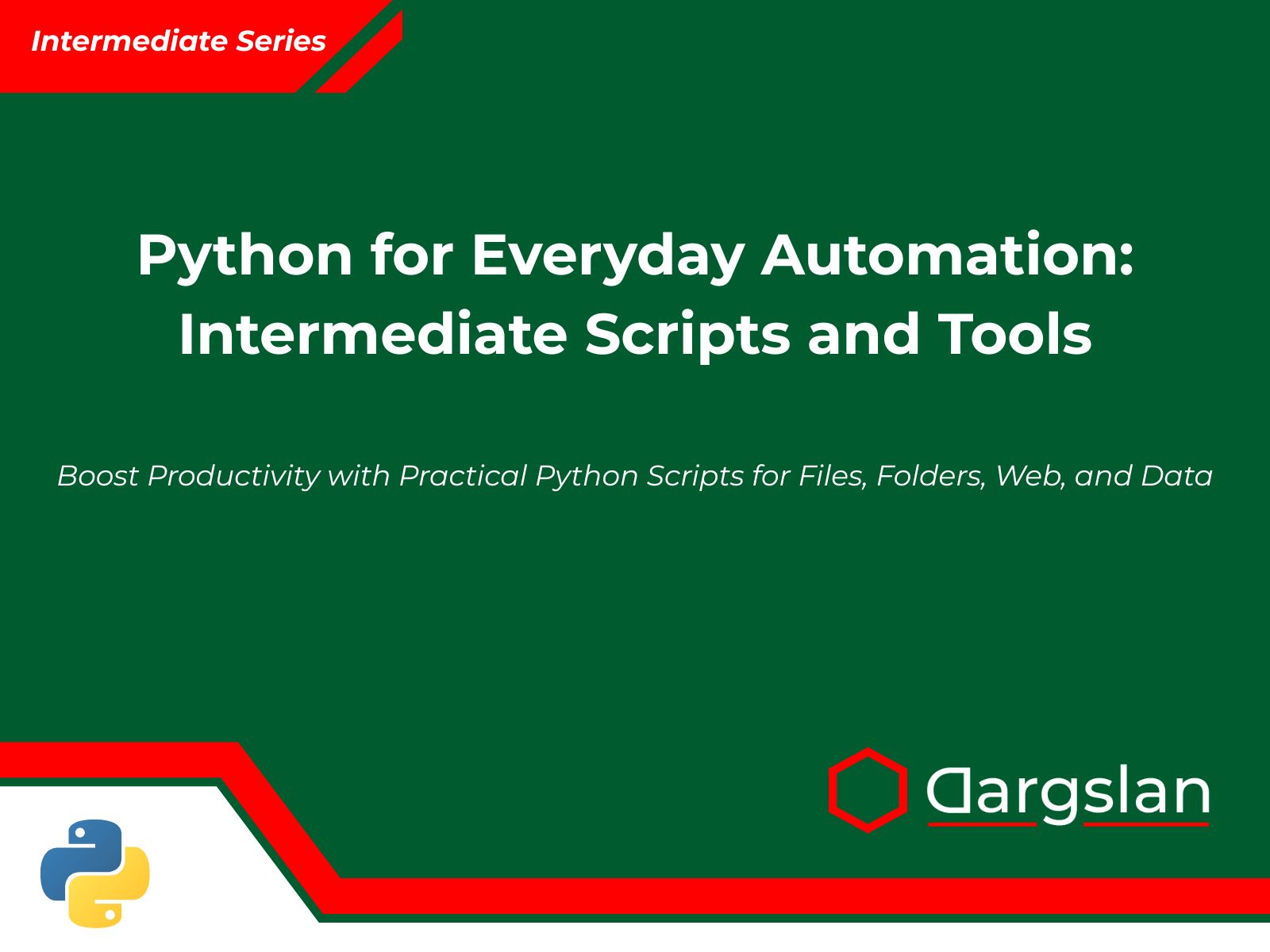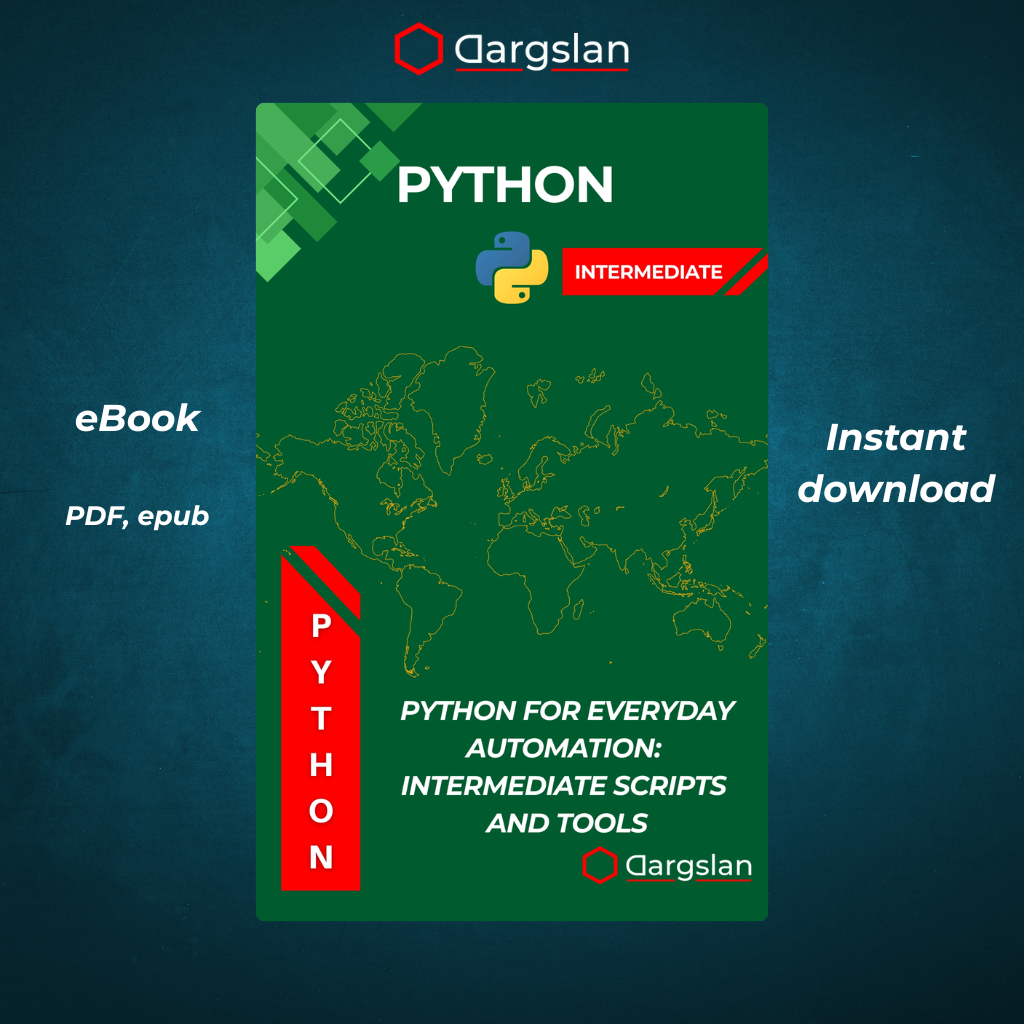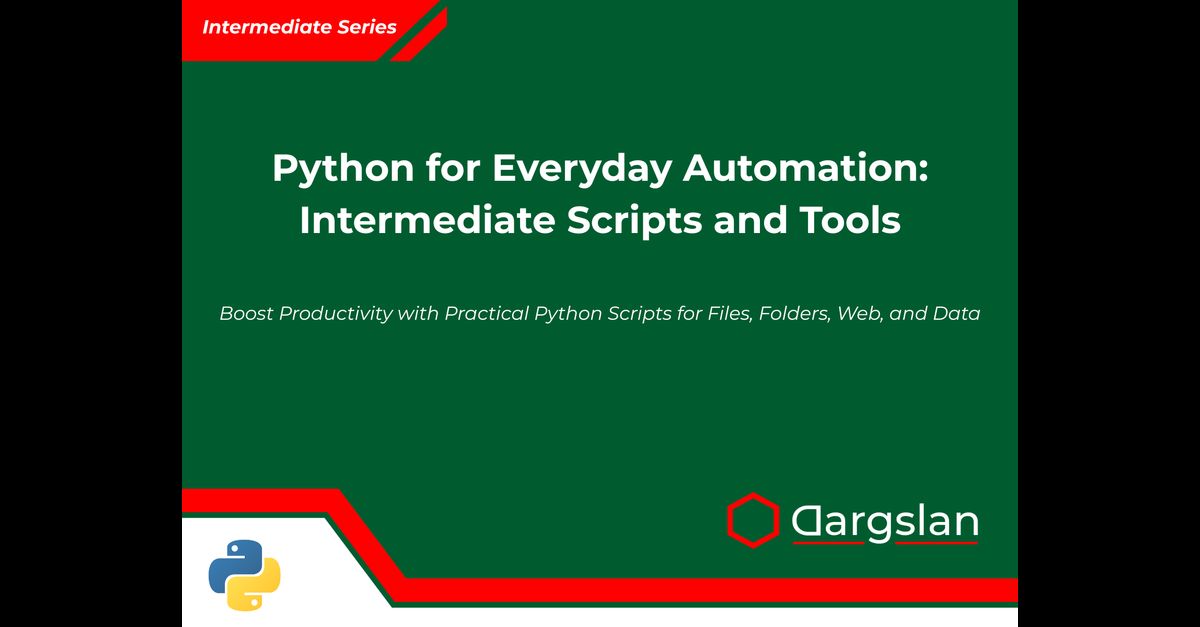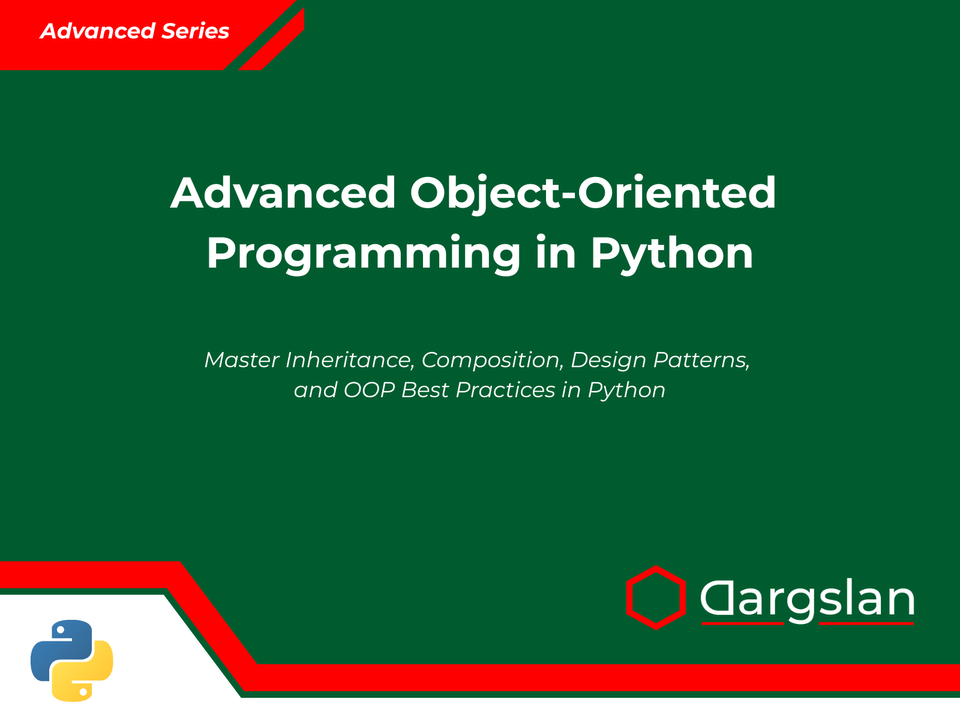Book Review: Python for Everyday Automation: Intermediate Scripts and Tools


Python for Everyday Automation: Intermediate Scripts and Tools
Boost Productivity with Practical Python Scripts for Files, Folders, Web, and Data
Python for Everyday Automation: Intermediate Scripts and Tools - A Comprehensive Review
Unlock the power of Python to automate tedious tasks, streamline workflows, and boost productivity with practical, real-world scripts.
Introduction: Revolutionizing Daily Tasks with Python
In today's fast-paced digital world, automation has become not just a luxury but a necessity for professionals across all fields. "Python for Everyday Automation: Intermediate Scripts and Tools" emerges as a pivotal resource for anyone looking to leverage Python's capabilities to simplify repetitive tasks, enhance efficiency, and focus on more creative work. This comprehensive book bridges the gap between basic Python knowledge and practical application, offering a treasure trove of actionable automation solutions.
The author, Dargslan, has masterfully crafted a guide that transforms intermediate Python skills into powerful automation tools applicable to everyday scenarios. Unlike many programming books that focus solely on theory, this work stands out for its hands-on approach and immediate practical value. Whether you're a developer seeking to optimize your workflow, an IT professional managing systems, or an enthusiast looking to simplify digital tasks, this book provides the roadmap to meaningful automation.
Book Structure and Content Overview
Spanning ten meticulously organized chapters and four valuable appendices, "Python for Everyday Automation" progresses logically from foundational automation concepts to specialized applications across various domains. Each chapter builds upon the previous, creating a cohesive learning journey that culminates in a comprehensive automation toolkit.
Chapter 1: Why Automate Everyday Tasks with Python?
The book begins by establishing a compelling case for Python automation. This opening chapter explores:
- The time-saving benefits of automating repetitive tasks
- Why Python outshines other languages for automation purposes
- The economic and productivity advantages of implementing automation
- Real-world scenarios where Python automation provides measurable benefits
- The accessibility of Python for both beginners and experienced programmers
This foundation-setting chapter helps readers understand not just how to automate with Python, but why it's worth investing time in building these skills. Through persuasive examples and statistics, the author demonstrates how even simple automation scripts can yield significant returns in saved time and reduced errors.
Chapter 2: File and Folder Automation
Moving into practical applications, Chapter 2 tackles one of the most common automation needs: file and folder management. Key topics include:
- Creating sophisticated file organization systems that automatically sort by type, date, or content
- Implementing batch renaming solutions with regular expressions and pattern matching
- Building file backup and synchronization tools that ensure data safety
- Monitoring directories for changes and triggering actions accordingly
- Searching and filtering files based on content, metadata, or other criteria
# Example script for organizing files by extension
import os
import shutil
from pathlib import Path
def organize_by_extension(directory):
"""Organize files in a directory by grouping them into folders by extension."""
directory = Path(directory)
# Get all files in the directory
files = [f for f in directory.iterdir() if f.is_file()]
for file in files:
# Skip hidden files
if file.name.startswith('.'):
continue
# Get the extension (or 'no_extension' if none exists)
extension = file.suffix.lower()[1:] if file.suffix else "no_extension"
# Create destination folder if it doesn't exist
dest_folder = directory / extension
if not dest_folder.exists():
dest_folder.mkdir()
# Move the file
shutil.move(str(file), str(dest_folder / file.name))
print(f"Moved {file.name} to {extension} folder")
# Example usage
organize_by_extension("/path/to/your/downloads")
This chapter equips readers with practical tools that immediately enhance file management efficiency—a universal pain point for computer users.
Chapter 3: Automating Excel and CSV Tasks
Data processing represents one of the most time-consuming aspects of many professional roles. Chapter 3 addresses this challenge head-on with Excel and CSV automation techniques:
- Creating and manipulating Excel spreadsheets programmatically with openpyxl
- Generating reports and visualizations automatically from data sources
- Performing complex data transformations and calculations across multiple files
- Implementing data validation and cleaning routines
- Building dashboards that update automatically with fresh data
The chapter provides complete solutions for common scenarios such as merging multiple spreadsheets, extracting specific data points, and creating formatted reports—all without manual intervention.
Chapter 4: Working with Dates and Schedules
Time management is critical in both personal and professional contexts. Chapter 4 explores:
- Building calendar applications and scheduling systems
- Creating reminder services and deadline trackers
- Working with different time zones and date formats
- Automating recurring tasks based on temporal patterns
- Generating time-based reports and analytics
This chapter is particularly valuable for project managers, event coordinators, and anyone who needs to manage complex schedules efficiently.
Chapter 5: Web Scraping for Useful Information
The internet contains vast amounts of valuable information, but accessing it systematically can be challenging. Chapter 5 demystifies web scraping:
- Constructing ethical scrapers that respect website terms of service
- Extracting specific data points from web pages using BeautifulSoup and Scrapy
- Implementing automated monitoring for price changes, content updates, or availability
- Handling authentication, sessions, and cookies for accessing protected content
- Processing and storing scraped data effectively
# Example script for tracking product prices
import requests
from bs4 import BeautifulSoup
import csv
from datetime import datetime
def track_price(url, product_selector, price_selector):
"""Track the price of a product on a website and log it with timestamp."""
headers = {
'User-Agent': 'Mozilla/5.0 (Windows NT 10.0; Win64; x64) AppleWebKit/537.36 (KHTML, like Gecko) Chrome/91.0.4472.124 Safari/537.36'
}
response = requests.get(url, headers=headers)
soup = BeautifulSoup(response.text, 'html.parser')
product_name = soup.select_one(product_selector).text.strip()
price = soup.select_one(price_selector).text.strip()
# Log the data
with open('price_tracker.csv', 'a', newline='') as file:
writer = csv.writer(file)
if file.tell() == 0: # Check if file is empty
writer.writerow(["Date", "Product", "Price"])
writer.writerow([datetime.now(), product_name, price])
print(f"Logged price for {product_name}: {price} at {datetime.now()}")
# Example usage
track_price(
"https://example.com/product/123",
"h1.product-title",
"span.current-price"
)
This chapter transforms readers from passive consumers of web content to active gatherers of structured data, opening up countless possibilities for information monitoring and analysis.
Chapter 6: Automating Email and Notifications
Communication automation can significantly reduce workload and ensure consistency. Chapter 6 covers:
- Setting up automated email systems for reports, alerts, and newsletters
- Creating notification systems across multiple channels (email, SMS, push)
- Building intelligent filtering and categorization of incoming messages
- Scheduling messages for optimal delivery times
- Implementing templates and personalization at scale
The practical scripts in this chapter help readers establish professional communication systems that would otherwise require expensive specialized software.
Chapter 7: PDF, Image, and Document Automation
Document processing is a major time sink in many organizations. Chapter It covers:
- Extracting text and data from PDFs using tools like PyPDF2 and pdfminer
- Generating dynamic PDF reports from templates and data sources
- Automating image processing tasks like resizing, conversion, and optimization
- Implementing OCR (Optical Character Recognition) for extracting text from images
- Creating document management workflows for sorting and organizing files
This chapter provides particularly high value for administrative professionals, researchers, and anyone dealing with large numbers of documents.
Chapter 8: Automating Cloud and Web Services
Modern computing increasingly relies on cloud services. Chapter 8 explores:
- Interacting with popular APIs like Google Drive, Dropbox, and AWS S3
- Building automation workflows that span multiple services
- Implementing authentication and security best practices
- Creating data synchronization systems between local and cloud storage
- Leveraging serverless functions for continuous automation
The integration examples in this chapter demonstrate how to create seamless workflows across different platforms and services.
Chapter 9: Running and Distributing Your Scripts
Automation scripts provide the most value when they run reliably without intervention. Chapter 9 addresses:
- Scheduling scripts to run at specific times using cron, Windows Task Scheduler, or Python libraries
- Packaging scripts for distribution to colleagues or clients
- Setting up error handling and notification systems
- Creating simple GUIs for non-technical users
- Implementing logging and monitoring to ensure reliability
# Example script for creating a simple GUI for a file organizer
import tkinter as tk
from tkinter import filedialog, messagebox
import threading
from pathlib import Path
import shutil
import os
class FileOrganizerApp:
def __init__(self, root):
self.root = root
root.title("File Organizer")
root.geometry("500x300")
# Create widgets
self.label = tk.Label(root, text="Select a folder to organize files by type:")
self.label.pack(pady=10)
self.folder_path = tk.StringVar()
self.path_entry = tk.Entry(root, textvariable=self.folder_path, width=50)
self.path_entry.pack(pady=5)
self.browse_button = tk.Button(root, text="Browse", command=self.browse_folder)
self.browse_button.pack(pady=5)
self.organize_button = tk.Button(root, text="Organize Files", command=self.start_organizing)
self.organize_button.pack(pady=20)
self.status_var = tk.StringVar()
self.status_var.set("Ready")
self.status_label = tk.Label(root, textvariable=self.status_var)
self.status_label.pack(pady=10)
def browse_folder(self):
folder_selected = filedialog.askdirectory()
self.folder_path.set(folder_selected)
def organize_files(self):
directory = self.folder_path.get()
try:
file_count = 0
folder_count = 0
# Process each file in the directory
for item in Path(directory).iterdir():
if item.is_file():
# Get the file extension
ext = item.suffix[1:].lower() if item.suffix else "no_extension"
# Create target directory if it doesn't exist
target_dir = Path(directory) / ext
if not target_dir.exists():
target_dir.mkdir()
folder_count += 1
# Move file to the appropriate directory
shutil.move(str(item), str(target_dir / item.name))
file_count += 1
# Update status occasionally
if file_count % 10 == 0:
self.status_var.set(f"Processed {file_count} files...")
self.status_var.set(f"Complete! Organized {file_count} files into {folder_count} folders.")
messagebox.showinfo("Complete", f"Organized {file_count} files into {folder_count} folders.")
except Exception as e:
self.status_var.set(f"Error: {str(e)}")
messagebox.showerror("Error", str(e))
def start_organizing(self):
if not self.folder_path.get():
messagebox.showwarning("Warning", "Please select a folder first.")
return
self.status_var.set("Working...")
self.organize_button.config(state=tk.DISABLED)
# Run the organizing process in a separate thread to keep GUI responsive
threading.Thread(target=self.process_and_reenable).start()
def process_and_reenable(self):
self.organize_files()
self.organize_button.config(state=tk.NORMAL)
# Create and run the application
if __name__ == "__main__":
root = tk.Tk()
app = FileOrganizerApp(root)
root.mainloop()
This chapter ensures that readers can transform their scripts from personal tools to robust, production-ready solutions.
Chapter 10: Building Your Automation Toolkit
The final chapter ties everything together by helping readers build a personalized automation ecosystem:
- Designing modular, reusable automation components
- Combining scripts into comprehensive workflows
- Prioritizing automation projects for maximum impact
- Documenting and maintaining automation systems
- Continuously improving and expanding automation capabilities
This forward-looking chapter ensures that readers don't just have isolated scripts but a cohesive automation strategy.
Valuable Appendices
The book's value extends beyond its main chapters with four information-packed appendices:
Python Automation Library Cheat Sheet
This appendix provides quick reference cards for the most useful Python libraries in automation contexts:
- File manipulation libraries (os, shutil, pathlib)
- Data processing tools (pandas, numpy, openpyxl)
- Web interaction modules (requests, beautifulsoup, selenium)
- Image and document processing libraries (Pillow, PyPDF2)
- API interaction tools (requests, json, oauth2)
Each entry includes installation instructions, common use cases, and sample code snippets, serving as a valuable quick reference.
Debugging and Logging Tips
Automation scripts must be reliable, and this appendix focuses on ensuring stability:
- Implementing robust error handling strategies
- Setting up comprehensive logging systems
- Troubleshooting common automation issues
- Testing strategies for automation scripts
- Monitoring long-running automation processes
These practices help readers create automation that works consistently, even in unexpected situations.
Cross-Platform Automation Notes
For readers working across different operating systems, this appendix provides:
- Strategies for creating scripts that work seamlessly on Windows, macOS, and Linux
- Handling operating system-specific features and limitations
- Platform-specific deployment considerations
- File path handling across operating systems
- Recommended virtual environment practices for cross-platform development
This information is particularly valuable in mixed-environment workplaces and for those creating scripts meant for wide distribution.
25 Automation Ideas You Can Try Today
Perhaps the most inspiring section of the book, this appendix offers 25 practical automation projects ranging from simple to complex:
- Daily news summarizer script
- Automatic folder cleaner and organizer
- Website uptime monitor
- Automated social media poster
- Personal finance tracker and bill reminder
- Weather alert system
- Automatic photo organizer and editor
- Email attachment downloader and sorter
- Meeting minutes transcriber
- RSS feed aggregator with filtering
- Automated data backup system
- PDF invoice processor and analyzer
- Recurring report generator
- Automated timesheet calculator
- Content publishing scheduler
- Inventory management system
- Job listing scraper and notifier
- Learning resource organizer
- Code snippet manager
- Home automation controller
- Calendar event synchronizer
- Automatic subtitle downloader
- Recipe ingredient extractor
- Browser bookmark organizer
- Cryptocurrency price alert system
Each idea includes a brief description and suggestions for implementation using the techniques covered in the book.
Key Features and Technical Details
Target Audience
"Python for Everyday Automation" is designed for:
- Intermediate Python programmers looking to apply their skills practically
- IT professionals seeking to streamline repetitive tasks
- Data analysts and researchers who process large amounts of information
- Office workers wanting to reduce manual data entry and manipulation
- System administrators managing complex digital environments
- Students expanding their programming portfolio with practical applications
The book assumes basic Python knowledge, including familiarity with core syntax, functions, and basic data structures. However, each script is explained thoroughly, making it accessible even to those with limited programming experience.
Technical Requirements
To follow along with the examples, readers will need:
- Python 3.7 or higher installed on their system
- Basic understanding of Python programming concepts
- Text editor or IDE (Visual Studio Code, PyCharm, etc.)
- Internet connection for installing libraries and accessing web services
- Optionally, accounts with services like Google, Dropbox, or AWS for cloud automation examples
The book provides installation instructions for all required libraries and tools, ensuring readers can quickly set up their environment.
What Sets This Book Apart
Several factors distinguish "Python for Everyday Automation" from similar titles:
-
Practical Focus: Every example solves a real-world problem rather than illustrating abstract concepts.
-
Complete Solutions: Scripts are provided in their entirety, not just as code snippets, allowing immediate implementation.
-
Cross-Platform Compatibility: Automation techniques work across Windows, macOS, and Linux with appropriate adaptations.
-
Ethical Considerations: The book emphasizes responsible automation, especially for web scraping and interaction with third-party services.
-
Scalable Approaches: Solutions start simple but include guidance for scaling to more complex scenarios.
-
Modern Python Practices: All code follows current Python standards and best practices, including type hints and modern syntax.
-
Real-World Testing: Every script has been tested in actual use cases, ensuring reliability and effectiveness.
Learning Outcomes and Benefits
By working through "Python for Everyday Automation," readers will achieve several valuable outcomes:
Time Savings and Efficiency
The most immediate benefit is the dramatic reduction in time spent on repetitive tasks. A simple file organization script might save hours each month, while more complex automation systems can reclaim days or weeks of productive time annually.
Enhanced Python Proficiency
Applying Python to practical problems deepens understanding far more effectively than abstract exercises. Readers will develop a stronger grasp of Python's capabilities and idioms through hands-on implementation.
Problem-Solving Skills
The process of identifying automation opportunities and implementing solutions develops critical thinking and analytical skills transferable to many domains.
Career Advancement
Automation skills are increasingly valued in virtually every field. The ability to create custom tools for workplace challenges positions readers as valuable technical resources.
Personal Toolkit Development
By the end of the book, readers will have built a personal collection of useful scripts that can be customized, combined, and expanded for years to come.
Practical Applications Across Industries
The scripts and techniques in "Python for Everyday Automation" have wide-ranging applications:
Business and Office Work
- Automated report generation from various data sources
- Email filtering, categorization, and response systems
- Document processing workflows for invoices, contracts, and forms
- Meeting scheduling and reminder systems
- Data entry automation and validation
IT and System Administration
- System monitoring and alert tools
- Automated backup and recovery solutions
- User account management systems
- Log analysis and reporting
- Security scan automation
Data Analysis and Research
- Data collection from multiple sources
- Cleaning and preprocessing pipelines
- Automated visualization generation
- Research paper cataloging and summarization
- Citation management and formatting
Media and Content Creation
- Content publishing and distribution systems
- Image and video processing workflows
- Social media management tools
- Content aggregation and curation
- Analytics collection and reporting
Personal Productivity
- Finance tracking and bill payment reminders
- Shopping price monitors and deal finders
- Personal knowledge management systems
- Habit tracking and reporting
- Home automation integration
Conclusion: The Automation Advantage
"Python for Everyday Automation: Intermediate Scripts and Tools" stands as an essential resource for anyone looking to harness Python's power for practical automation. By focusing on real-world applications rather than theory, this book delivers immediate value while building lasting skills.
The comprehensive coverage—from file management to web interactions to document processing—ensures that readers can address virtually any automation challenge they encounter. The modular approach allows for implementing solutions incrementally, gradually building a personalized automation ecosystem.
Perhaps most importantly, the book changes how readers approach repetitive tasks. Rather than accepting tedious work as inevitable, they develop an "automation mindset" that continuously identifies opportunities for efficiency. This perspective shift may be the most valuable takeaway of all, transforming not just how readers work with technology but how they think about productivity overall.
For intermediate Python programmers looking to apply their skills practically or busy professionals seeking to reclaim time lost to repetitive tasks, "Python for Everyday Automation" provides the perfect roadmap to a more efficient future. The investment in learning these techniques returns dividends in saved time and reduced frustration for years to come, making this book not just a learning resource but a career-enhancing asset.
Meta Description: Discover how to automate everyday tasks with Python! Learn practical scripts for files, web scraping, data processing & more. Perfect for intermediate Python users.
Keywords: Python automation, Python scripts, task automation, file automation, web scraping Python, automation tools, Python productivity, intermediate Python, everyday automation, Python PDF automation, Python data processing

Python for Everyday Automation: Intermediate Scripts and Tools





